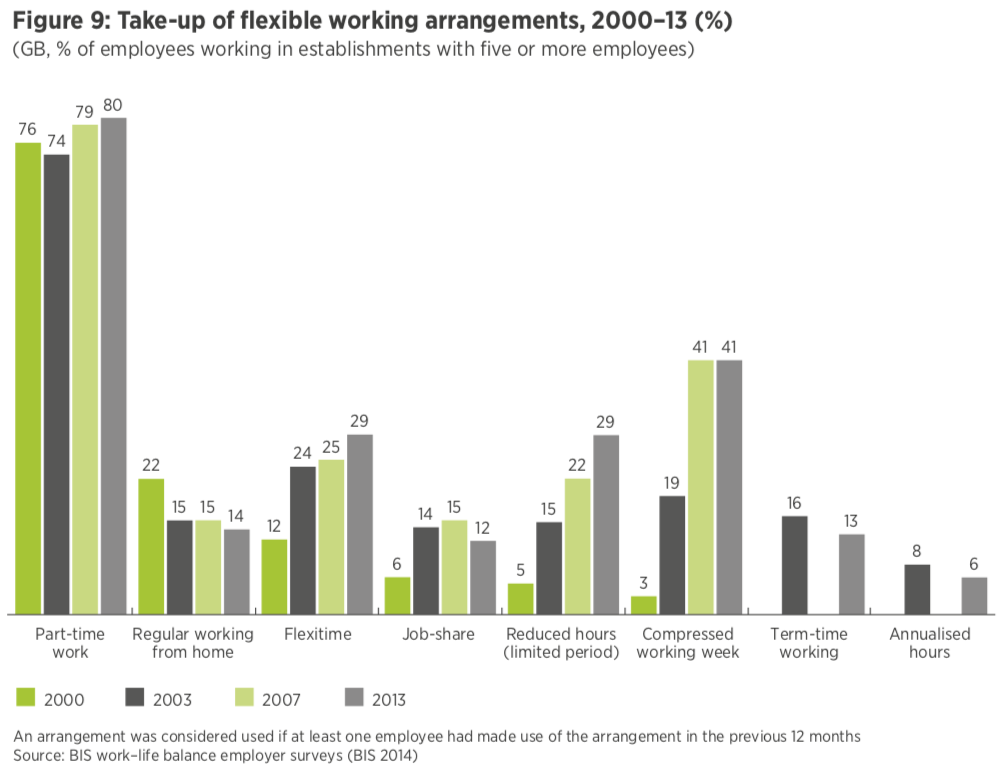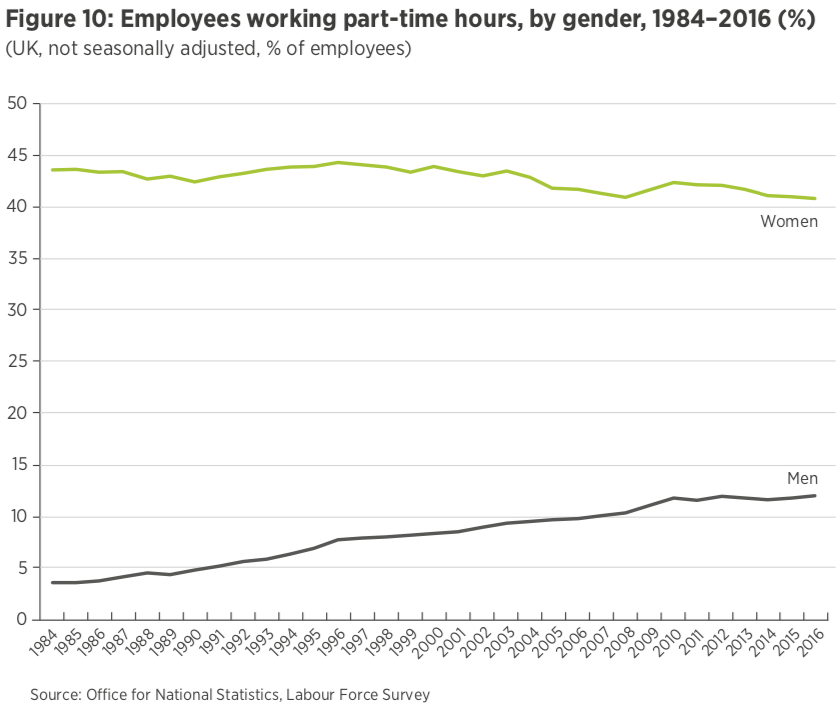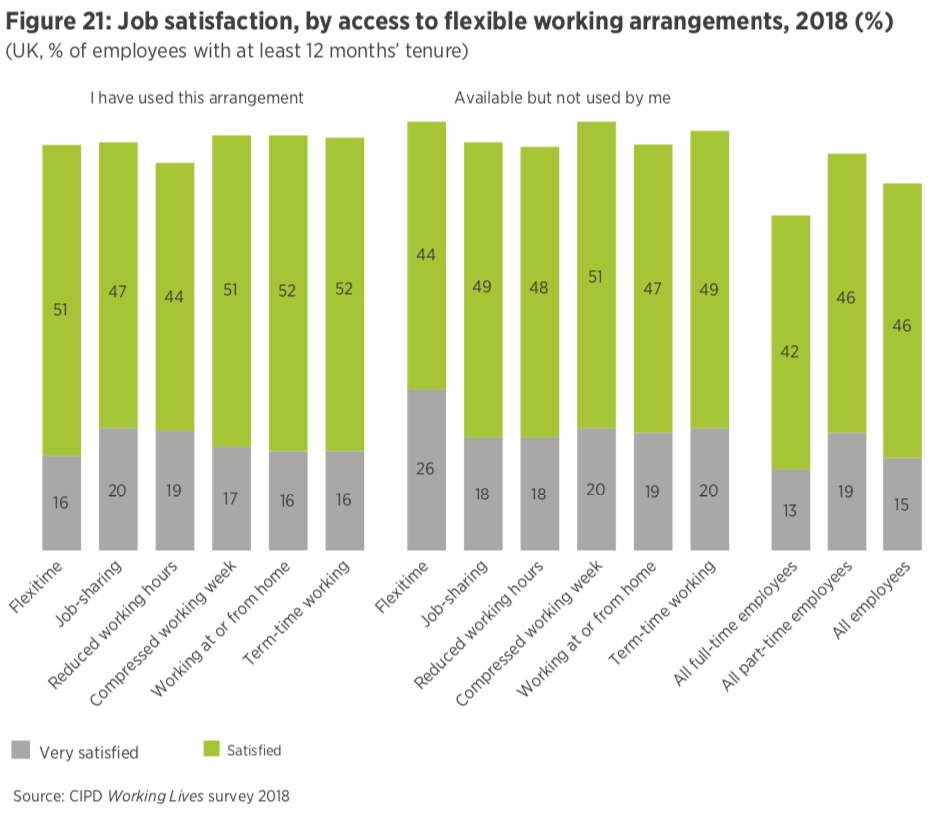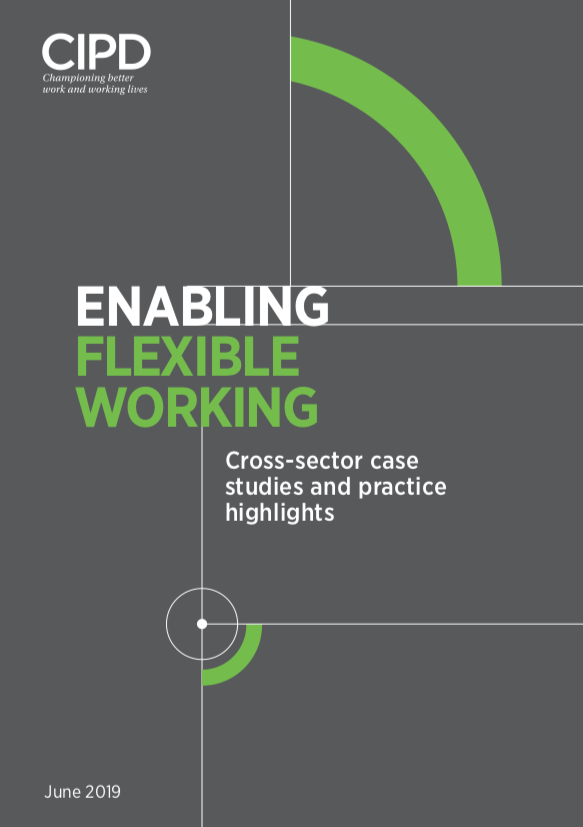The term ‘flexible working’ brings to mind practices such as part-time hours, flexitime, zero-hours contracts and working from home. The concept also comes with it an implied understanding that it’s not suitable for all workplaces, for example those where a certain level of staff cover is needed. Is this the case though?
In this post I want to explore what flexible working means in reality and how it can be applied and adapted (or flexed!) to different organisational contexts.
Flexible working – the research
This is an area of great interest for the CIPD and they have a whole section on their website dedicated to research, guidance and tools. They outline that “Flexible working relates to an organisation’s working arrangements in terms of the time, location and pattern of working” and go on to explain that it improves access to the labour market and has a wide-range of benefits for employers and staff.
To help gain a better understanding of the current state of flexible working I took a look at the CIPD January 2019 Megatrends report. This pulls together a number of surveys and studies on different aspects of flexible working and the workplace, and I would definitely recommend this to anyone interested or involved in flexible working. For our purposes I’d like to highlight some of the key or interesting points, although it looks like working mothers in Lithuania have a tough time (see page 33).
- The report starts by listing and defining typical flexible working practices as part-time working, term-time working, job-sharing, flexitime, compressed working hours, annualised hours, working from home, mobile working and zero-hours contracts.
- At around 25%, part-time working is the most common flexible working practice and, apart from small changes around the time of the 2008 financial crisis, this level has pretty much been the same since the mid-1990s. This is also the case for the percentage of workers with access to flexible working at around 45%.
- The figures on the actual take up of these practices reveal interesting trends (figure 9). For example, there has been a gradual decline in regularly working from home and job sharing, possibly highlighting their limitations. Flexitime, reduced hours and term time working have seen an increase.

- I think it’s common knowledge that the majority of those working part time are women. The stats show that the proportion of women has decreased slightly whereas men have increased from under 5% in the 1980s to over 10% now (figure 10).

- The topic of women working part time brings forward the issue of equal pay and I think the results on flexible working in different sectors gives further detail on the context. For example, the 2019 pay gap reporting results showed that the construction sector has the greatest gap and here they are with the lowest percentage of employees with flexible working arrangements (figure 14). On the flip side the accommodation and food industry had the lowest gap (at 1%) and the chart shows them as one of the top for flexible working.

- There are quite of lot of stats relating to job satisfaction but I think this is a good overview as it shows that satisfaction is actually higher for employees in organisations with flexible working arrangements, even for those who haven’t actually made use of them (figure 21).

- There is a stark difference between availability in the public and private sectors, with the former performing better in most areas (figure 30). This possibly due to the tendency for public sector organisations to be larger and therefore more developed in their practices.

Case study – Calderdale and Huddersfield NHS Foundation Trust
It’s this case study, seen as part of a learning session at the CIPD ACE 2019, that prompted me to write this post. I thought it was an interesting example of an organisation using flexible working in a way that worked for them, and to some extent challenging traditional thinking on what flexible working means.
Employing around 6,000 staff and operating across two main hospitals and a number of community sites, Calderdale and Huddersfield NHS Foundation Trust faced staffing challenges. Recruitment was a big issue, as they appeared to be loosing more staff than they were hiring, and the data showed that work-life balance was the number one reason for staff leaving. The Trust already had various flexible working practices but it was felt that this stopped at the policy level, with resistance experienced in reality.
The trust held focus groups and hit a ‘light bulb moment’ when they found that what staff wanted was a set pattern of work rather than shift patterns. Staff also fed back that they were constrained by a lot of rules.
To facilitate the shift the Trust invested in an e-roster system, accessed by staff by the Allocate-me-app. Through the app staff can bid for the shift pattern they want, enabling them to balance work with outside commitments such as childcare or looking after ill parents. This recognised that individuals’ needs change over the course of their working life.
Work was carried out alongside this on shifting the culture of the organisation, specifically in managers’ views of flexible working. Investment was also made in the leadership of the organisation to enable a focus on workforce planning. The context of the health sector workforce, with a national shortage of nurses, further built the business case and the sharing of success stories and support from the senior team enabled the culture shift.
The results justified the effort with the Trust seeing sickness rates falling from 5.16% to under 4% and the staff turnover rate has gone from 13.55% to 7.55% in two years. There’s also been a direct financial payoff as the increased use of bank staff has significantly reduced the use of most costly agency staff.
I’ve very much abbreviated the case study and I’d encourage you to read the full version in the CIPD’s Enabling Flexible Working report. I think the key learning points are:
- Flexibility means different things to different people and to get it right you need to ask them.
- As with any organisational change there is the need for cultural change.
- The use of statistics can build a compelling case for change as well as measuring the impact of what’s been implemented.






